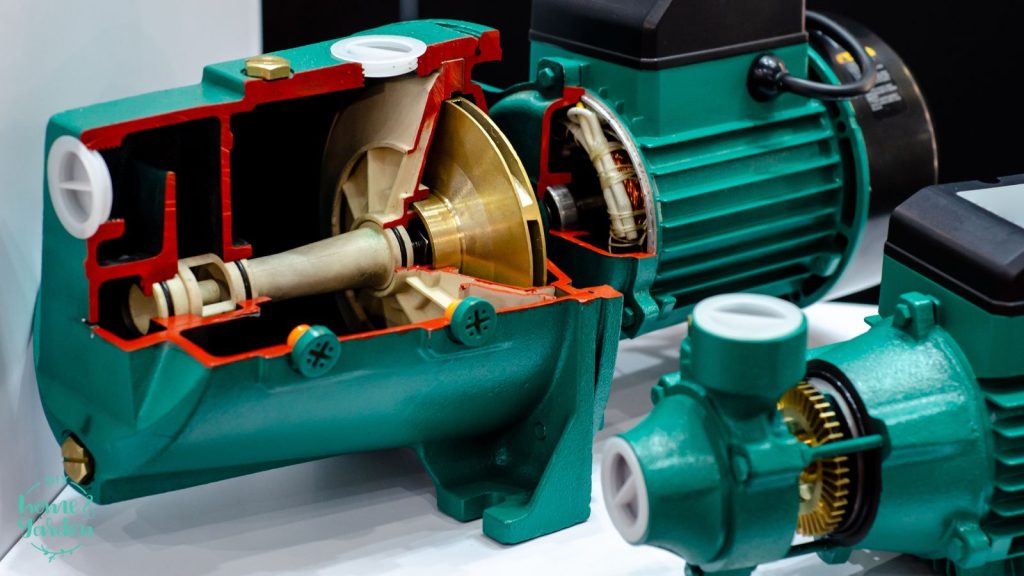Self-priming pumps are a special kind of pump that has the special characteristic of pumping liquids from a well or reservoir without necessitating the submerging of the pump. They are useful in many different types of fluid-handling processes. This makes them effectively compete for other similar equipment and allows their usage in a wide number of agricultural, industrial, and municipal projects. The performance of self-priming pumps will improve, and their cost of operation will decrease as you acquire a deeper understanding of their operation. This will prolong the pump’s life as well. This article explores the operation of these pumps, the parameters that affect their efficacy, and maintenance recommendations for optimal performance.
Overview of Self-Priming Pumps
A self-priming pump extracts liquid from any water source by drawing air, which produces pressure on the liquid’s surface. This is one of the primary features of self-priming pumps and is typically implemented in situations where the fluid source is located beneath the pump. Water and effluent management, irrigation, and chemical processing are industries that necessitate fluid transfer reliability, and self-priming pumps are particularly well-suited for these applications.
The efficiency of these pumps is evaluated based on their ability to maintain pressure levels, discharge rates, and energy consumption. Operators and engineers alike must understand how to optimize this efficiency.
Self-Priming Pump Operation
The operation of self-priming pumps is distinct from that of conventional centrifugal pumps. The concept of functioning is based on centrifugal force and air displacement.
When the pump is activated, the impeller rotates, creating a centrifugal force that draws liquid into the pump casing. Simultaneously, an exhaust is employed to eliminate any air that may be present in the casing. As the pump continues to operate, the fluid fills the casing and expels the air, resulting in the generation of a vacuum. Once it is primed with liquid, the pump can continuously draw from the source, even if the source level fluctuates.
These self-priming capabilities are achieved through specific design features, including:
- Vent Ports: Vent ports facilitate the removal of air during the priming procedure.
- Casing Design: Intended to facilitate fluid movement and prevent air from becoming confined within the casing.
- Impeller Design: Designed to produce a strong vacuum while simultaneously maintaining high flow rates.
Factors that Influence Efficiency
Various variables can influence the efficacy of self-priming pump systems. Understanding these components is crucial to improving pump efficiency.
Design and Construction
The design and materials employed in a self-priming pump have a substantial impact on its effectiveness. Important components include:
- Impeller Design: By decreasing turbulence and augmenting flow rates, an impeller that is well-designed can enhance efficiency.
- Materials Used for Casing: The materials employed in the pump can also impact its overall performance, durability, and resistance to corrosion.
- Seal Quality: The pump’s efficacy is ensured by the use of high-quality seals, which prevent leakage and maintain pressure.
Fluid Properties
The characteristics of the fluid being propelled have a substantial impact on the efficacy of the pump. These are among the factors that are taken into account:
- Viscosity: A system’s efficacy may be reduced due to the additional energy necessary to transport thicker fluids. Pumps must be chosen in accordance with the fluid’s viscosity to ensure optimal performance.
- Temperature: Elevated temperatures may impact the pump’s ability to self-prime, which can affect the fluid’s viscosity and density.
- Solids: The presence of solid particulates in fluids can reduce pump efficiency over time due to wear and strain on the pump components.
System Configuration
The layout and configuration of the pump system can also impact its efficacy.
- Piping Diameter and Length: The energy required to maintain flow rates is higher when the pipelines are longer, and the diameters are smaller as friction losses are increased.
- Elevation: The physical action of vertically transporting water necessitates more energy to lift fluid with a pump. The placement and height of the pump can be optimized to improve performance.
- Valves and Fittings: The increased resistance generated by the presence of more elbows, bends, or valves reduces the system’s overall efficacy.
Advantages of Self-Priming Pumps
Self-priming pumps are the optimal option for a wide range of applications due to their numerous advantages:
- Reduced Downtime: The absence of manual priming can result in a reduction in downtime and labour costs.
- Flexibility: These pumps are capable of accommodating a variety of fluids, including those with varying viscosities and temperatures.
- Space Efficiency: Self-priming pumps can be installed in locations where conventional pumps may not function effectively. These can include confined spaces or where fluid sources are lower than the pump.
- Consistent Performance: Self-priming pumps can maintain consistent flow rates for an extended period of time after they have been primed.
Common Applications
Numerous industries implement self-priming pumps as a result of their unique capabilities. Applications that are frequently implemented include:
- Wastewater Treatment: Self-priming pumps are employed to effectively manage fluids that may contain solid detritus, such as sludge and sewage.
- Irrigation Systems: Suitable for the extraction of water from subterranean sources, rivers, or reservoirs in which the pump is not submerged.
- Chemical Processing: Self-priming pumps are utilized in chemical facilities to manage corrosive and viscous chemicals, thereby ensuring safety and dependability.
- Food and Beverage Sector: Used to ensure the efficacy and sanitation of operations by facilitating the transmission of liquid ingredients.
Maintenance Strategies for Maximizing Efficiency
The longevity and efficiency of self-priming pump systems are contingent upon their consistent maintenance. The following are a few of the recommended practices:
- Conducting routine inspections: Perform routine inspections of pump components, including the impeller, casing, seals, and bearings, to identify any indications of wear or damage.
- Fluid Quality Monitoring: Ensure that the fluid being pumped is free of excessive particulates or contaminants that could potentially damage the pump.
- Vent ports: It is crucial to routinely clear vent ports to prevent blockages that impede the self-priming process.
- Inspect for air leaks: The system should be inspected for air leakage, particularly in vacuum lines, as it can affect performance and reduce efficiency.
- Lubrication: To extend the pump’s lifespan, it is crucial to ensure that the moving components are sufficiently lubricated to minimize friction and attrition.
Conclusion: Enhancing the Efficiency of the Pump System
It is imperative to comprehend the efficacy of self-priming pump systems in order to enhance the quality of fluid management processes. By comprehending the operation of these pumps, understanding all variables that influence their performance, and adhering to the most effective maintenance procedures, operators can rely on their pumps to provide high reliability and effectiveness when necessary. Self-priming pumps are essential investments in numerous industries due to their extensive applications and advantages, which ensure high productivity and significant cost reductions. In conclusion, the endurance and efficacy of these systems will be improved by investing time in their understanding.


